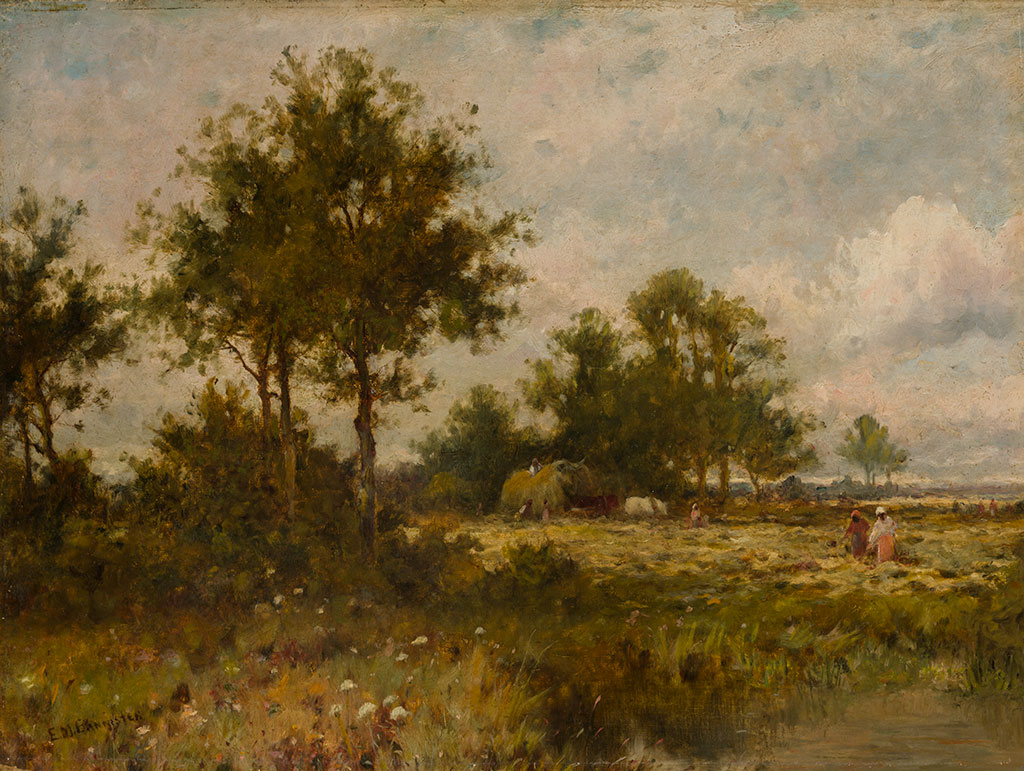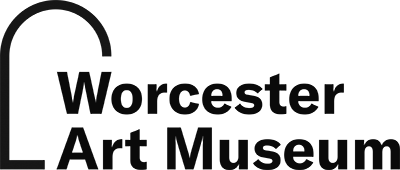Drawing on the Museum’s Exceptional Collection of American Art Before 1900, the New Installation Brings More Works on View, With More Variety, and a New Interpretive Plan

Worcester, MA—August 5, 2025—In April 2026, the Worcester Art Museum (WAM) will open its newly reinstalled and reinterpreted galleries of American art from the colonial period through the 19th century. The culmination of a major, multi-year initiative, these new galleries will expand the array of artists, subjects, types of objects, stories, and voices on view, fostering deeper engagement with one of the Museum’s most renowned collection areas. Coinciding with the 250th anniversary of the United States, the galleries will address the achievements, complexities, and enduring relevance of American art and history. To accompany the opening on April 25, WAM will also present a robust calendar of special events and public programs aimed at connecting audiences with the Museum’s collection.
The Museum’s reimagined galleries of American art up to 1900 will showcase more than 130 works of art representing a diverse range of artists, periods, media, and styles. Iconic works from the collection such as the paired portraits of John Freake and Elizabeth Clarke Freake and Baby Mary (1671–1674), Winslow Homer’s The Gale (1883–1893), and silver objects crafted by Paul Revere will be on view, along with lesser-known and rarely seen treasures—including changing displays of light-sensitive items that can only be exhibited for limited amounts of time. The new installation will also highlight several key acquisitions the Museum has made in recent years as part of its ongoing efforts to expand and enrich the collection. This initiative reflects a commitment to filling historical and thematic gaps, and to representing a broader spectrum of artistic voices. Among these important new acquisitions are paintings by Edward Mitchell Bannister and Charles Ethan Porter, two important Black artists, and selections from the Krashes Collection of American Folk Art.
“This is a major milestone for the Worcester Art Museum, a reflection of our commitment to one of our most important collections, with works that are beloved by visitors from across the region,” said Matthias Waschek, the Worcester Art Museum’s Jean and Myles McDonough Director. “Opening during the country’s 250th anniversary, this new installation is more than a ‘redo,’ it is a complete rethinking of what it means now, in 21st-century America, to see and appreciate works from important periods in American history. Moreover, these galleries are part of a series of ongoing, transformative investments in the Museum. That includes our new Arms and Armor Galleries, which will open in November 2025 with more than 1,000 objects on view, along with more than $50 million in capital improvements to our campus that enhance the visitor experience and the presentation of art.”
In one of the most innovative features of the reinterpretation, objects will be installed thematically, rather than in a more traditional chronological or stylistic manner. The thematic sections explore major topics across American art broadly and the Museum’s collection specifically—with themes that continue to resonate today.
- The introductory section presents a small selection of works to posit the question, What Is American Art? Among the highlights here will be Edward Hicks’ The Peaceable Kingdom (about 1833), which presents a utopian vision of the United States by juxtaposing a Biblical scene of creatures living in harmony with an image of William Penn’s Treaty with the Lenape Indians. A ceramic bottle decorated with serpents (300–700 C.E.) from the ancient Moche culture of present-day Peru and Miguel Cabrera’s Virgin of Guadalupe (about 1755), made by a leading artist in Spanish Colonial Mexico, show that American art encompasses works produced throughout the hemisphere, across the centuries, and by diverse cultural groups.
- The Envisioning Nature section looks at various manifestations of nature in American art, including as an expression of national values, as in Albert Bierstadt’s painting Yosemite Falls (1865–1870) celebrating westward expansion and the majesty of American landscapes, and as a source of creative inspiration, as in Childe Hassam’s impressionist landscape Trees in Bloom (1885) capturing the fleeting effects of light and atmosphere. In addition, this section examines the ecological impact of materials such as silver, or the mahogany used in the wine cooler by Isaac Vose and Son (about 1820).
- In the section Regional Expressions, works showcase the role of artists in Worcester and throughout New England in the development of American art and in WAM’s institutional history. A mid-1800s basket attributed to an unidentified Nipmuc artist documents the cultural traditions of the area’s Indigenous peoples, while Ralph Earl’s panoramic vista Looking East from Denny Hill (1800) represents an idealized vision of Worcester’s burgeoning development. As the first work acquired for WAM’s collection, the portrait of the influential artist William Morris Hunt (1880) by Helen Knowlton, his student and a Worcester native, helped establish the regional character of WAM’s American collection from the Museum’s founding period.
- The Global Connections section explores the ways in which American art has always been connected to and influenced by other cultures through the circulation of goods, people, and ideas. The painting Questioner of the Sphinx (about 1875) by Elihu Vedder, who spent long periods of time in Europe, exemplifies the late-19th-century fascination with non-Western, “exotic” subjects. John La Farge’s Peacock Window (1892–1908) showcases both his technical innovations in the centuries-old medium of stained glass and the influence of Japanese art on his aesthetic vision. Cultural exchange also informs a Haudenosaunee (Iroquois) beaded hat from the 1870s which combines imported glass beads acquired through trade with Indigenous artistic traditions.
- The Constructing Identities section looks at how art has been used to express different forms of identity—from social status, to gender, racial, and ethnic identities, to family and community connections. Similar to how people today craft their own self-images with digital tools, artists and sitters of earlier periods also staged a portrait through pose, costume, and props—as seen in Thomas Smith’s Self-Portrait (about 1680), which contains references to his naval career and Quaker faith. Americans also expressed identity through owning works of art—such as silver and high-style furniture on view—as well as through making art, as in a sampler embroidered by E. G. Boit (1760) to demonstrate her genteel femininity and accomplishments with the needle.
- The Artistic Practice section examines various facets of the artistic profession in America. Thomas Crawford’s classicized marble sculpture Boy Playing Marbles (1853) shows the significant influence of European academic training and artistic conventions, while the portrait of Isaac Hobey by the self-taught artist John Brewster (about 1810) exemplifies the vitality of folk art. Other works address questions of artistic hierarchies through deconstructing the historical distinctions of “fine art” versus “craft,” as well as through acknowledging the role of enslaved labor in the 1706 silver spout cup produced by the shop of John Edwards. Innovation also shaped the contours of American art, as in the Eastlake Armchair (1878) by George Hunzinger, who pioneered modern manufacturing methods in furniture.
The thematic approach of the Museum’s reinstalled American galleries will shed new light on works in the collection, while also prompting visitors to engage with different perspectives and draw connections between past and present.
“This reimagination of the Worcester Art Museum’s American galleries will present a fresh approach to our renowned and beloved collections of American art,” said Karen Sherry, the Museum’s Curator of American Art, who joined WAM in 2024 and is leading this project. “Previously, the American galleries featured primarily paintings—and mostly portraits—and interpretation focused on biographical and stylistic information. With this new installation, our goal is to provide audiences with something dramatically different. By showcasing a more expansive vision of American art and fostering dialogue among diverse works of art, we can highlight stories that address our nation’s remarkable and complex history in ways that will better resonate with contemporary audiences.”
Related public programs will be announced closer to the opening of the galleries.
The Worcester Art Museum is grateful for the diverse group of community advisors, including representatives of various cultural and educational organizations, whose thoughtful conversations and insights played a vital role in shaping the vision and direction of the new galleries of American art.
The reimagination and reinstallation of the American art galleries is generously supported by the Henry Luce Foundation, Terra Foundation for American Art, and the Americana Foundation. Additional support is provided by the Boote Family Endowment Fund for American Art.



About the Worcester Art Museum
The Worcester Art Museum creates transformative programs and exhibitions, drawing on its exceptional collection of art. Dating from 3000 BCE to the present, these works provide the foundation for a focus on audience engagement, connecting visitors of all ages and abilities with inspiring art and demonstrating its enduring relevance to daily life. Creative initiatives—including pioneering collaborative programs with local schools, fresh approaches to exhibition design and in-gallery teaching, and a long history of studio class instruction—offer opportunities for diverse audiences to experience art and learn both from and with artists.
The Worcester Art Museum, located at 55 Salisbury Street in Worcester, MA, is open Wednesday through Sunday from 10 am to 4 pm. For information on admission and discounts, visit https://www.worcesterart.org/visit. Museum parking is free.
For more information, please contact:
Madeline Feller
Worcester Art Museum
MadelineFeller@worcesterart.org
508-793-4373
Sascha Freudenheim
PAVE Communications & Consulting
sascha@paveconsult.com
917-544-6057
Above: Edward Mitchell Bannister, The Hay Gatherers, about 1893, oil on canvas, Museum Purchase from the Dr. Nicholas Bruno Collection through the gift of Jean McDonough, the estate of Black Robinson, the Eliza S. Paine Fund, the Sarah C. Garver Fund, and the Ruth and Loring Holmes Dodd Fund, 2023.5

